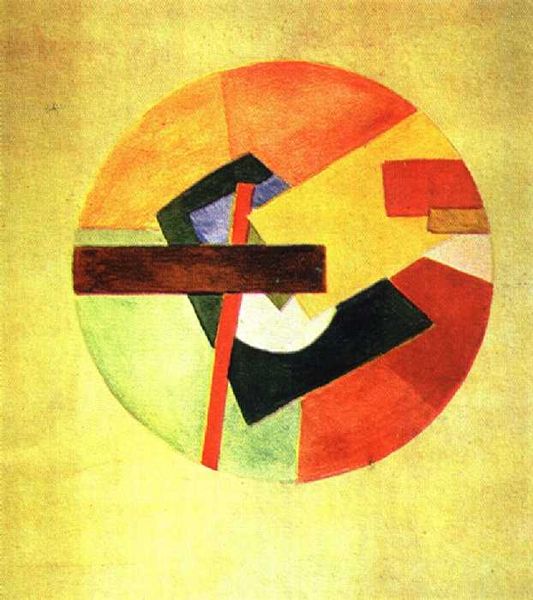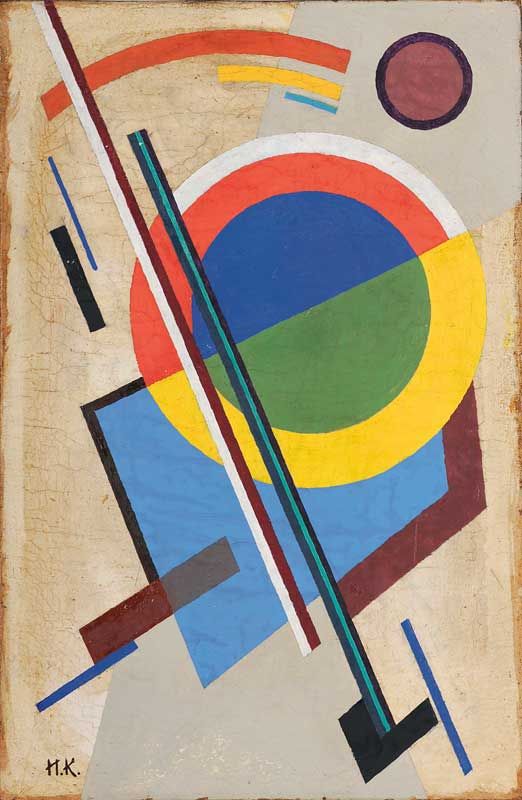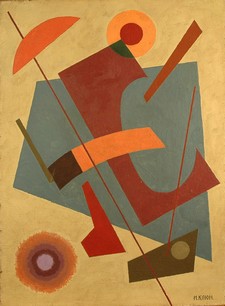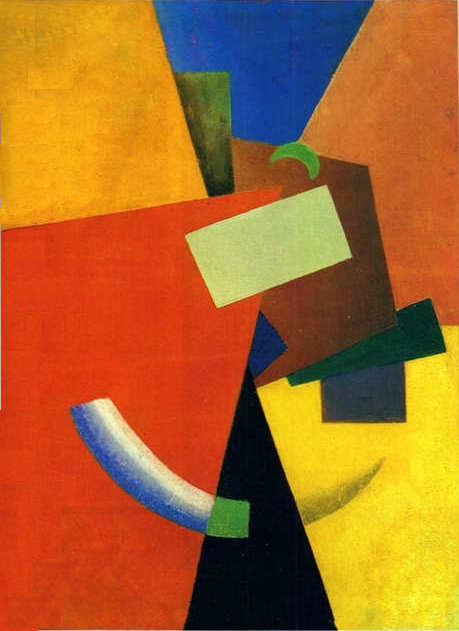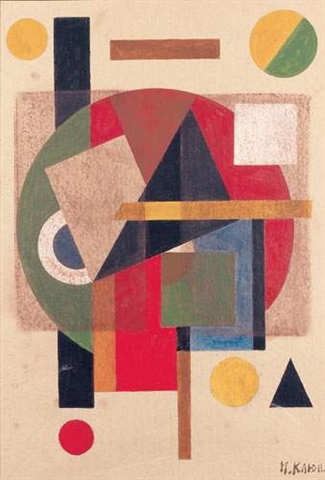<Back to Index>
- Painter and Designer Aleksandra Aleksandrovna Ekster, 1882
- Painter and Designer Ivan Vasilyevich Kliun, 1873
PAGE SPONSOR
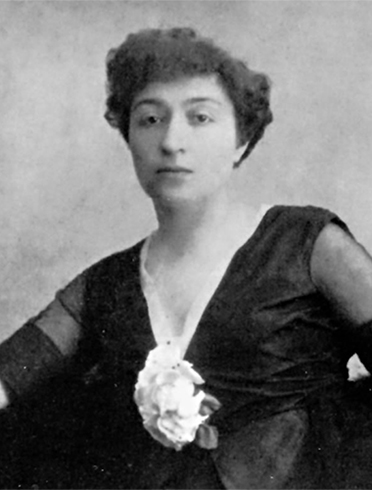
Aleksandra Aleksandrovna Ekster (Russian: Александра Александровна Экстер, Ukrainian: Олександра Олександрівна Екстер; 6 January 1882 - 17 March 1949) was a Russian - French painter (Cubo - Futurist, Suprematist, Constructivist) and designer.
She was born Aleksandra Aleksandrovna Grigorovich in Białystok, Imperial Russia (now Poland) to a wealthy Belarusian family. Her father, Aleksandr Grigorovich, was a wealthy businessman. Young Aleksandra received an excellent private education, she studied languages, music, art, and took private drawing lessons.
In 1903, Aleksandra Grigorovich married a successful Kiev lawyer, Nikolai Evgenyevich Ekster. The Eksters belonged to cultural and intellectual elite of Kiev. At that time she studied painting at Kiev art school. In 1907, she spent several months with her husband in Paris, and there she attended the Académie de la Grande Chaumière in Montparnasse. From 1908 to 1924 she intermittently lived in Kiev, St. Petersburg, Odessa, Paris, Rome and Moscow.
Her painting studio in the attic at 27 Funduklievskaya Street was a rallying stage for Kiev's intellectual elite. There she was visited by poets and writers, such as Anna Akhmatova, Ilia Ehrenburg and Osip Mandelstam, dancers Bronislava Nijinska and Elsa Kruger, as well as many artists, such as Alexander Bogomazov, Wladimir Baranoff - Rossine, and students, such as Grigori Kozintsev, Sergei Yutkevich and Aleksei Kapler among many others. In 1908 she participated in an exhibition together with members of the group Zveno (Link) organized by David Burliuk, Wladimir Burliuk and others in Kiev.
In Paris, Aleksandra Ekster was a personal friend of Pablo Picasso and Georges Braque, who introduced her to Gertrude Stein.
In 1914,
Ekster participated in the Salon des Indépendants exhibitions
in Paris, together with Kazimir Malevich, Alexander Archipenko, Vadym Meller, Sonia
Delaunay - Terk and other
French and Russian artists. In that same year she
participated with the “Russians” Archipenko, Koulbine and Rozanova in the International
Futurist Exhibition in Rome. In
1915 she joined the group of avant garde artists Supremus.
Ekster absorbed from many sources and cultures in order to develop her own original style. In 1915 - 1916 she worked in the peasant craft cooperatives in the villages Skoptsi and Verbovka along with Kazimir Malevich, Yevgenia Pribylskaya, Natalia Davidova, Nina Genke, Liubov Popova, Ivan Puni, Olga Rozanova, Nadezhda Udaltsova and others. Ekster later founded a teaching and production workshop (MDI) in Kiev (1918 - 1920). Vadym Meller, Anatol Petrytsky, Kliment Red'ko, Tchelitchew, Shifrin, Nikritin also worked there. Also during this period she was one of the leading names of Alexander Tairov's Chamber Theater.
In 1919 together with the avant garde artists Kliment Red'ko and Nina Genke - Meller she decorated the streets and squares of Kiev and Odessa in abstract style for the Revolution Festivities. She worked with Vadym Meller as a costume designer in a Ballet Studio of the dancer Bronislava Nijinska (Vaslav Nijinsky's sister).
In 1921 she became a director of the elementary course Color at the Higher Artistic - Technical Workshop (VKhUTEMAS) in Moscow, a position she held until 1924. Her work was displayed alongside that of other Constructivist artists at the 5x5=25 exhibition held in Moscow in 1921.
In 1924, Aleksandra Ekster and
her husband emigrated to France and settled in Paris.
Initially she became a Professor at the Academie der
Moderne in Paris. From 1926 to 1930 Ekster was a
professor at Fernand Léger's Académie d'Art Contemporain.
In 1933 she began creating extremely beautiful and
original illuminated manuscripts (gouache on paper),
which are beyond doubt the most important works of the
last phase of her life. The "Callimaque" manuscript (c.
1939, the text being a French translation of a hymn by
Hellenistic poet Callimachus) is widely regarded as her
masterpiece. In 1936 she participated in the exhibition Cubism and Abstract Art in New York and went on
to have solo exhibitions in Prague and in
Paris. She was a book illustrator for the publishing
company Flammarion in Paris
from 1936 until her death in the Paris suburb of Fontenay-aux-Roses. During the past few decades her reputation has
increased dramatically, as have the prices of her works.
As a consequence, hundreds of fakes have appeared on the
market in recent years, and virtually all of the recent
monographs on Exter were published for the sole purpose
of making such fakes appear to be authentic.
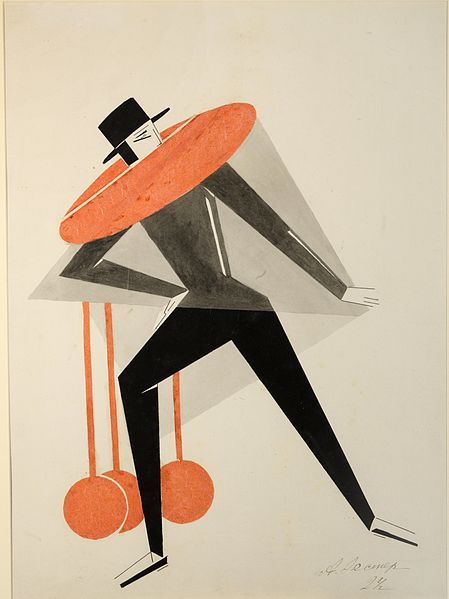
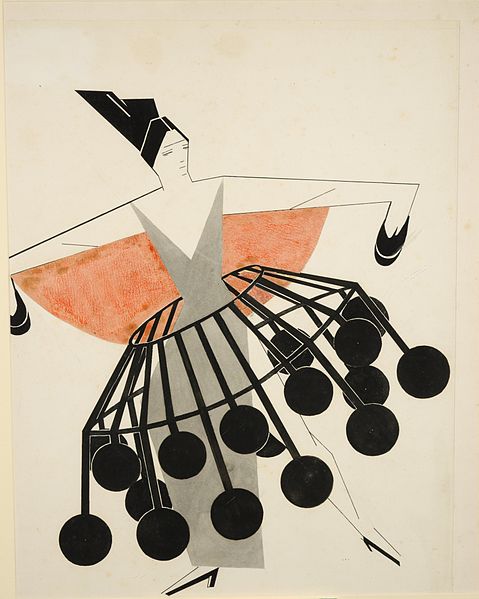
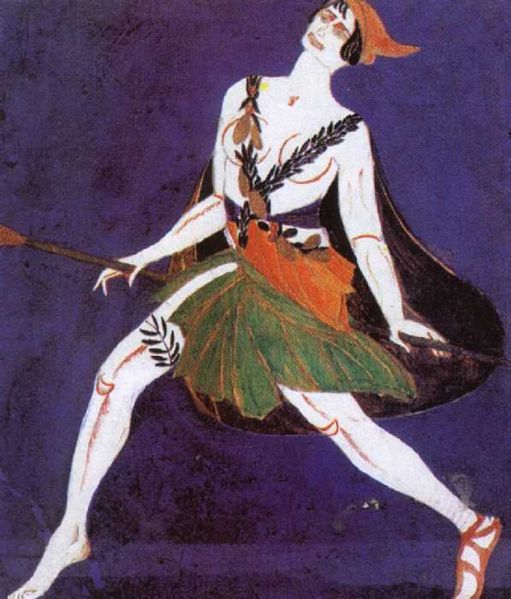
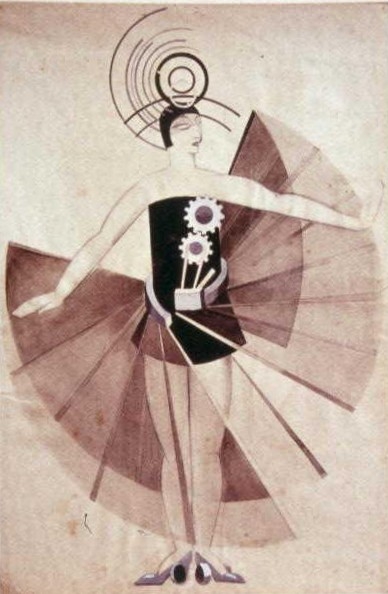
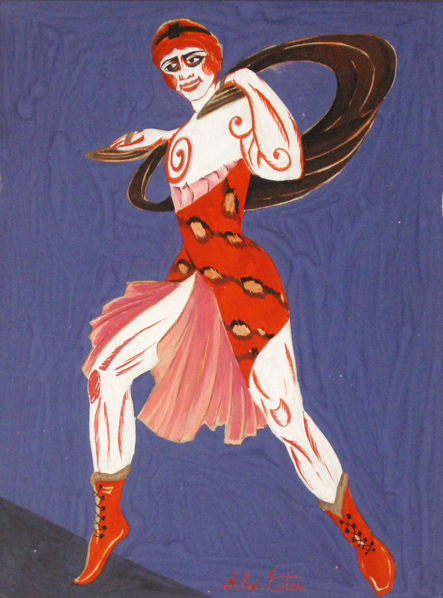
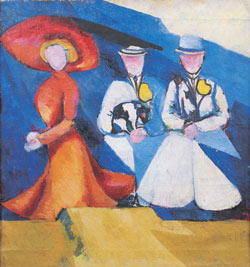
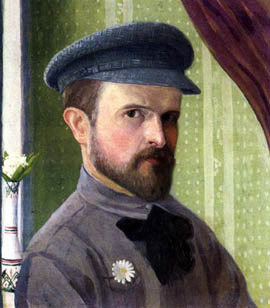
Ivan Vasilievich Kliun, or Klyun, born Klyunkov (Russian: Иван Васильевич Клюн; 1 September 1873, Bolshiye Gorky, Petushinsky District - 13 December 1943, Moscow) was a Russian Avant Garde painter, sculptor and art theorist, associated with the Suprematist movement.
His father was a carpenter. In 1881, seeking to improve their economic condition, the family moved to Kyiv. In 1890, they moved again, to Russian Poland. He received his initial artistic education at the Society for the Encouragement of the Fine Arts in Warsaw, in the 1890s, while working as an accountant. In 1898, he relocated to Moscow, where he frequented the studios of Fyodor Rerberg and Ilya Mashkov.
His most important contact, however, came in 1907 when he met Kazimir Malevich and was introduced to the Russian Avant-Garde. This influenced him profoundly, although he joined the Moscow Salon when it was created in 1910 and remained a member until 1916. He originally worked in the Symboloist style but, in 1913, due to the influence of Malevich, he began exhibiting with a group from St. Petersburg known as the "Soyuz Molodyozhi" (Union of Youth). At this time, he became fond of Cubo - Futurism, began producing sculpture (under the influence of Vladimir Tatlin and later exhibited with several other Avant Garde groups.
In 1915, he provided lithographs and a short chapter for the book, Тайные пороки академиков (The Secret Vices of Academicians) by the poet Aleksei Kruchyonykh. The book was a harsh criticism of Symbolism and decadence in general. That same year he became a follower of Malevich's Suprematism and, the following year, joined his group known as Supremus. While there, he helped prepare a manifesto and a journal that was never published. He also collaborated with the Verbovka Village Folk Centre; working with peasant artisans.
From 1918 to 1921, he was a professor at Vkhutemas, the state art and technical school. From 1920, he was a member of Inkhuk (the Institute of Artistic Culture) and, after 1921, a Corresponding Member of GAHN (State Academy of Art Sciences).
Until the mid 1920s, his works were largely geometric forms. In the late 1920s, he developed an interest in modern Western European art, especially the French; copying works by Picasso and Braque. He was especially attracted to the works of Amédée Ozenfant. In the early 1930s, he created numerous still lifes in the Purist style. From the mid 1930s on he, and most Soviet artists, were compelled to paint works of Social Realism. In response, he created realistic still lifes and landscapes and gave them away to friends and family.